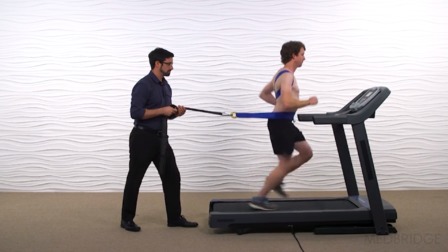This continuing education course is hosted on the Medbridge platform. It will utilize the movement system as a framework to assess the biomechanics of throwing. You will learn how to classify scapular, humeral, and thoracic movement patterns as they relate to observation range of motion. You will then advance your movement assessment skills by learning the biomechanics and critical events of a throw. Based on your movement observations and biomechanics knowledge, you will then learn how to classify movement dysfunction and provide sport-specific treatments to correct inefficient movement.
Description
Chapters & Learning Objectives
1. Throwing Biomechanics and Assessment
In this chapter, Dr. Vagy will introduce a research-based model to assess pitching mechanics. Dr. Vagy introduces the key phases of the throw: windup, stride, cocking, acceleration, deceleration, and follow-through. You will learn how to identify the six key critical events of the throw and common movement errors that throwers demonstrate during each critical event. Integrate the use of your smart phone and tablet to video analyze throwing mechanics.

2. Scapular Assessment
In this chapter, Dr. Vagy introduces the importance of the scapula during throwing and presents assessment and treatment strategies that target the scapula. He presents a scapular alteration test, the application of dynamometry and its role in assessing muscular performance, as well as how to assess the speed of force generation.

3. Scapular Treatment
In this chapter, Dr. Vagy introduces treatment options targeting periscapular musculature utilizing concepts of muscular facilitation. He integrates the usage of CLX bands to provide vectors of assistance and resistance to selectively active muscles involved in throwing. He also applies the concepts of speed and perturbation to CLX band exercises to increase specificity of training and progress high level patient population.

4. Humeral Assessment and Treatment
In this chapter, Dr. Vagy introduces the concept of glenohumeral joint centration, its importance during throwing, and how to assess the humerus using this concept. He utilizes progressive exercises that maintain joint centration while mirroring the transition from late cocking to acceleration of the throw.

5. Lumbopelvic Assessment and Treatment
In this chapter, Dr. Vagy discusses the importance of thoracolumbar/lumbopelvic coordination and stability during throwing. Learn to assess and treat various abdominal muscle activation patterns as well as incorporate reflexive cues for maximal activation. Learn general and sport specific abdominal exercise progressions to improve the stability and coordination of the throwing athlete.






